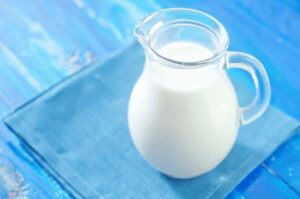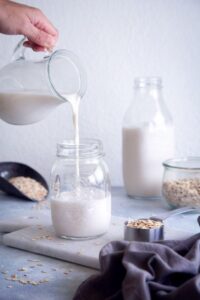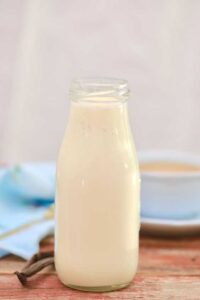
While drinking green tea straight is often considered the healthiest option, many find the taste more enjoyable with the addition of milk. Although adding milk may slightly reduce some health benefits (read more at shorturl.at/lpsFG), it can enhance the drinking experience. In many establishments, non-dairy creamers are used as a cost-effective alternative, providing a convenient and shelf-stable option that appeals to Thai consumers.
Non-dairy creamers typically contain 18-30% butterfat, significantly higher than the 1-2% found in regular milk. These products mimic cow’s milk cream and have gained popularity for their ease of use. For individuals who are lactose intolerant, non-dairy creamers can provide an excellent substitute. Most non-dairy creamers are composed of palm oil fat, milk proteins separated from cow’s milk, sugar, and water, all dried into a fine powder. The primary component, palm fat, gives the creamer its white color when mixed with water, resulting in a creamy texture that is cholesterol-free yet high in saturated fatty acids.
When selecting a non-dairy creamer to enhance your matcha latte, consider the following:
1. Compatibility with tea flavor.
2. Taste profile—ensure it is rich and pleasant without off-putting odors.
Creamers can be categorized into two types: powdered and liquid. Powdered creamers, derived from the separation of raw milk components, typically deliver a rich, rounded sweetness when blended with tea. Conversely, liquid creamers are often food additives mixed with vegetable oils, resulting in a viscosity resembling real cream, but lacking the robust flavor of dairy-based options. Therefore, liquid creamers may not be the best choice for tea, as they can dilute the delicate flavors of green tea.
For those preferring real dairy over non-dairy options, consider using fresh cream, sweetened condensed milk, or even soy milk. If you wish to create a richer homemade condensed milk, combine 2 cups of fresh milk with 2/3 cup of sugar in a saucepan. Heat over medium heat until the sugar dissolves, then reduce to low heat, leaving the lid slightly ajar to allow water to evaporate for about 30 minutes. Stir occasionally, then continue cooking for another 20 minutes until the milk darkens and thickens. Add a pinch of baking soda, stir quickly, and cook on low heat for an additional 5 minutes before removing from heat. Let it cool, and store in a jar for up to two weeks.
To avoid astringency in your green tea latte—a taste often attributed to low-quality creamers—focus on the tea extraction process. Use boiling water to rinse the tea leaves back and forth four times. After filtering, promptly remove the tea powder from the water without allowing it to soak too long. Quickly add the creamer while the water is still hot to ensure proper dissolution.
By carefully selecting your ingredients and preparation methods, you can enjoy a delicious matcha latte that suits your taste preferences without compromising on quality.
Sources:
https://www.znaturalfoods.com/whole-milk-powder
https://www.wifemamafoodie.com/homemade-oat-milk/
shorturl.at/opyY9



